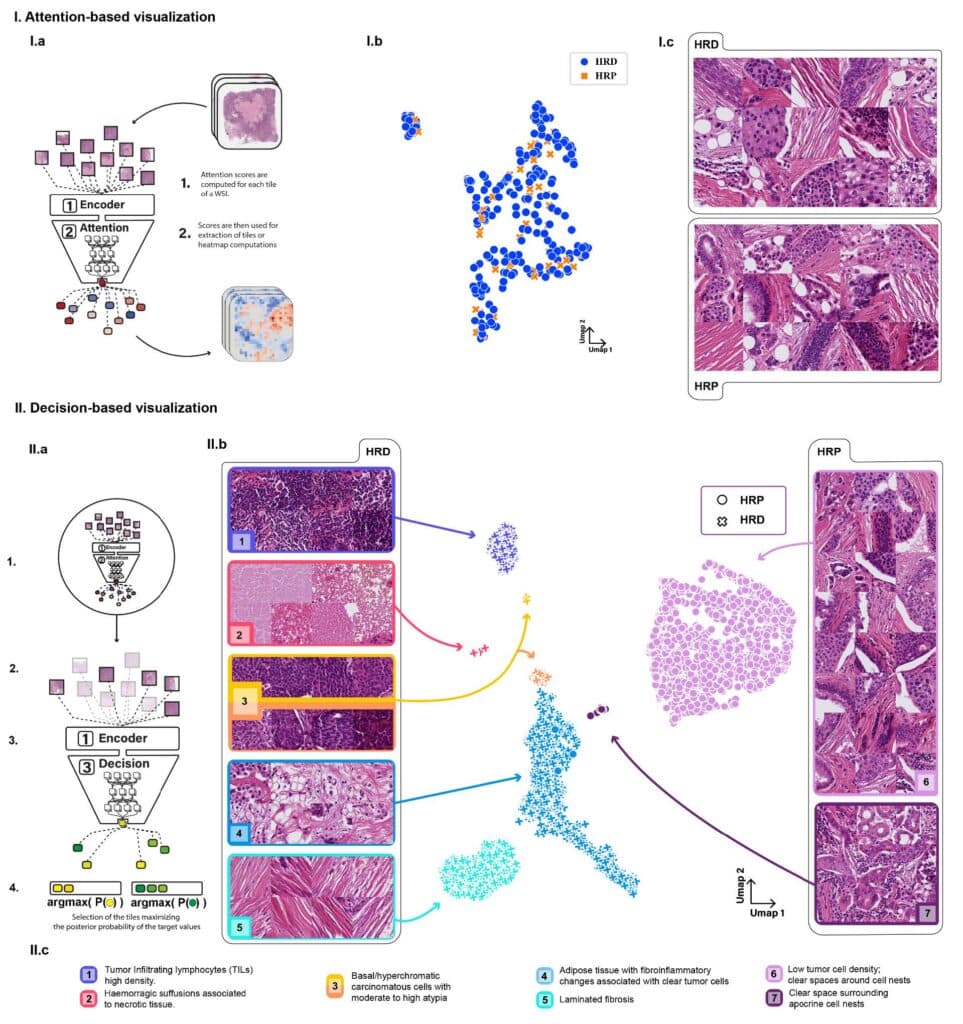Image analysis: towards personalised medicine for breast cancer


Can we tell whether a tumour has a genetic anomaly simply by looking at thin slides under the light microscope? And, if so, what does this observation tell us?
These two questions, at the heart of the research conducted by Tristan Lazard, a PhD student at the Centre de bio-informatique (CBIO Mines Paris – PSL), are addressed in an article published in the prestigious journal Cell Report Medicine in December 2022. (FI impact factor 17).

This collective article, of which Tristan Lazard is lead author, is entitled “Deep learning identifies morphological patterns of homologous recombination deficiency in luminal breast cancers from whole slide images”. The article is the result of close collaboration between the Institut Curie’s pathology department (Anne Vincent-Salomon) and two École des Mines research centres: the CBIO (Thomas Walter) and the CMM (Etienne Decencière). This collaboration was made possible by a strategic partnership between École des Mines and the Institut Curie, and is therefore an excellent example of PSL’s interdisciplinary approach.
“To make an impact in this field, it is essential to combine biomedical expertise with artificial intelligence expertise,” explains Thomas Walter, Director of the CBIO. “It’s about defining projects together, working together and, above all, never ceasing to learn from each other.”
For the young researcher, who will be submitting his thesis (under the supervision of Thomas Walter and Etienne Decencière) in June, the result is both unexpected and full of promise for better patient care. The thesis was funded by Q-Life and Thomas Walter’s PRAIRIE chair.
We worked on microscopic slides (whole slide images), digitised images of tumour sections from a cohort of patients set up by the Institut Curie, to try and predict a genetic anomaly (the homologous recombination defect) which, if detected, would make it possible to personalise and improve the treatment of patients. The very fact that this is feasible is encouraging; there were no known morphological signs of HRD. The slides on which the prediction is based are routinely taken at low cost. This could therefore enable this type of method to be used on a large scale. We have also worked on making the predictions of our model interpretable, and have thus been able to discover a number of ‘visual’ signs (morphological phenotypes) specific to tumours carrying the anomaly. As well as being promising for clinical use, these learning methods can also be exciting from a more fundamental point of view of understanding diseases.
With over two million women diagnosed with breast cancer every year, artificial intelligence is proving to be a valuable tool in the service of medicine. Indeed, luminal breast cancers, which are the focus of this study, account for 60% of cases. The algorithm developed by Tristan Lazard will make it possible to identify patients who could benefit from targeted therapy. A patent involving Mines Paris and the Institut Curie is in preparation.